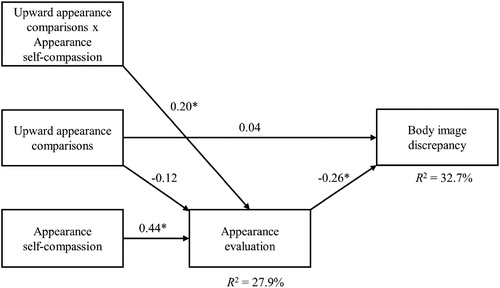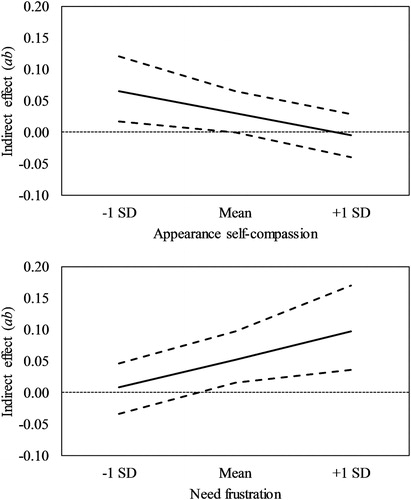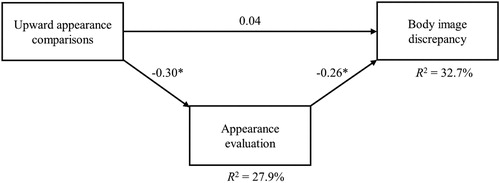Figures & data
Table 1. Bivariate Correlations, Descriptive Statistics, and Internal Consistencies (n = 366).
Table 2. Parameter Estimates from the Mediation (Model 1) and Moderated Mediation Models (Models 2 and 3).
Figure 2. Moderated mediation model with appearance self-compassion as the moderator. Covariates (age, BMI, and sex) are not shown in the Figure. *p <.05.

Figure 3. Moderated mediation model with need frustration as the moderator. Covariates (age, BMI, and sex) are not shown in the figure. *p < .05.

Table 3. Conditional Direct (Upward Appearance Comparisons → Appearance Evaluation) and Indirect Effects (Upward Appearance Comparisons → Appearance Evaluation → Body Image Discrepancy) at Different Levels of the Moderators (Appearance Self-Compassion and Need Frustration).
Figure 4. The figure shows the indirect effect of upward appearance comparisons on body image discrepancy through appearance evaluation (Y-axis) at different levels of the moderator (X-axis). Top figure shows the moderating effect of appearance self-compassion (Model 2). Bottom figure shows the moderating effect of need frustration (Model 3). Solid lines represent indirect effects and dashed lines represent the 95% CI around the indirect effects.


